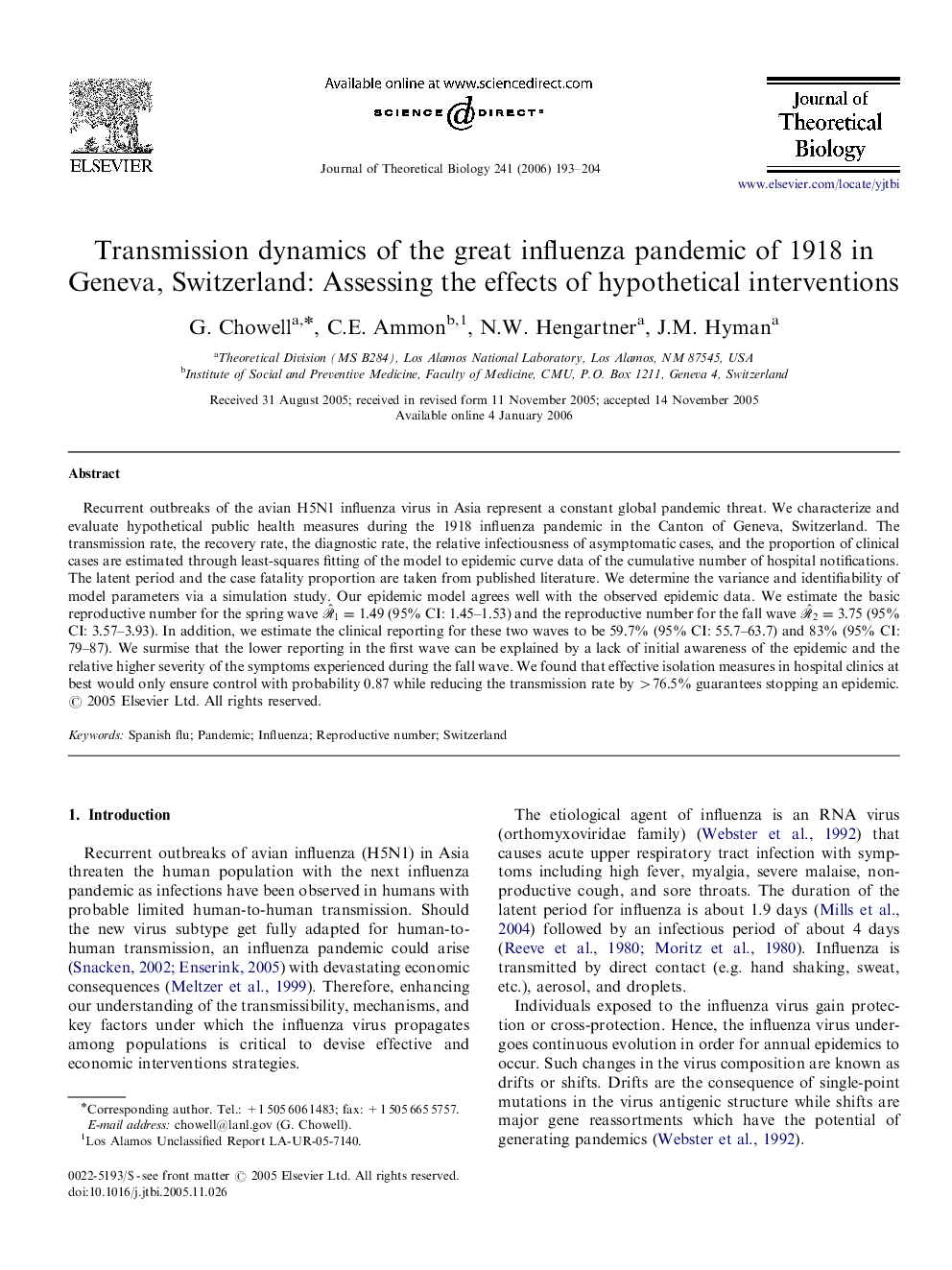| Article ID | Journal | Published Year | Pages | File Type |
|---|---|---|---|---|
| 4499501 | Journal of Theoretical Biology | 2006 | 12 Pages |
Recurrent outbreaks of the avian H5N1 influenza virus in Asia represent a constant global pandemic threat. We characterize and evaluate hypothetical public health measures during the 1918 influenza pandemic in the Canton of Geneva, Switzerland. The transmission rate, the recovery rate, the diagnostic rate, the relative infectiousness of asymptomatic cases, and the proportion of clinical cases are estimated through least-squares fitting of the model to epidemic curve data of the cumulative number of hospital notifications. The latent period and the case fatality proportion are taken from published literature. We determine the variance and identifiability of model parameters via a simulation study. Our epidemic model agrees well with the observed epidemic data. We estimate the basic reproductive number for the spring wave R1^=1.49 (95%95% CI: 1.451.45–1.531.53) and the reproductive number for the fall wave R2^=3.75 (95%95% CI: 3.573.57–3.933.93). In addition, we estimate the clinical reporting for these two waves to be 59.7%59.7% (95%95% CI: 55.755.7–63.763.7) and 83%83% (95%95% CI: 7979–8787). We surmise that the lower reporting in the first wave can be explained by a lack of initial awareness of the epidemic and the relative higher severity of the symptoms experienced during the fall wave. We found that effective isolation measures in hospital clinics at best would only ensure control with probability 0.870.87 while reducing the transmission rate by >76.5%>76.5% guarantees stopping an epidemic.
